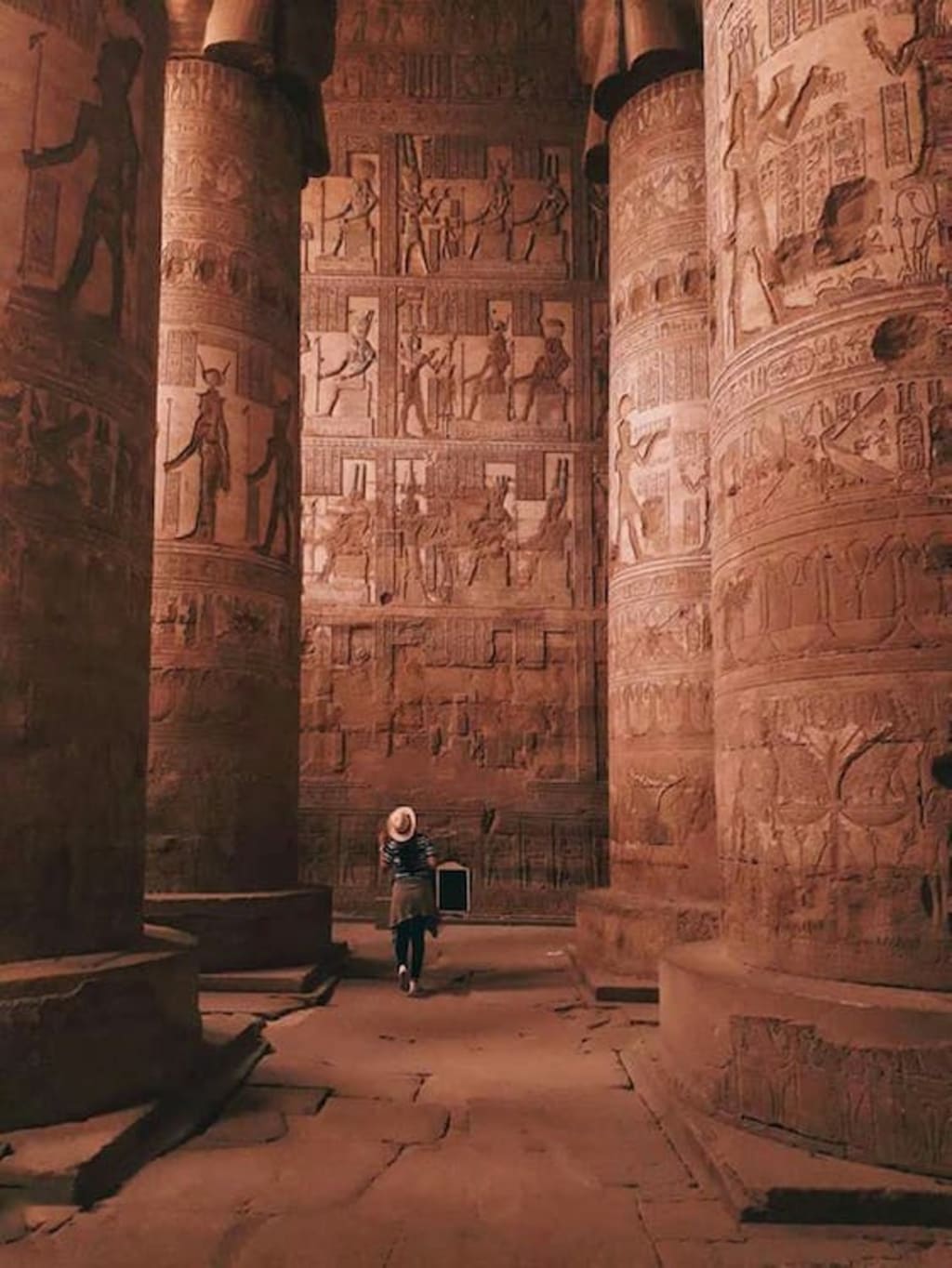Welcome to History for Granite: Unveiling the Secrets of Ancient Egypt
The Enigma of the Hidden Chambers: Unraveling the Secrets of the Great Pyramid of Giza

Table of Contents
Introduction
The Great Pyramid of Giza: A Timeless Wonder
Scarcity of Written Records about the Pyramids
Four Ancient Authors and Their Testimonies
4.1 Herodotus: Speculations and Unreliable Accounts
4.2 Diodorus Siculus: Precise Descriptions, but No Interior Details
4.3 Strabo: Movable Stone and Vault Entrance
4.4 Pliny the Elder: The Enigmatic Well-Shaft
The Mystery of Missing Upper Chamber Records
Speculations and Contradictions
The Concealed Upper Chambers: A Plausible Explanation
A Pattern of Plugging and Rediscovery
Charles Piazzi Smyth's Encounter with the Blocked Descending Corridor
Local Guides and Their Influence
The Motivation Behind Concealment
Conclusion
Introduction
Welcome to History for Granite, where we delve into the mysteries of ancient Egypt. Join us on this journey as we explore the enigmatic Great Pyramid of Giza and the secrets it holds. Subscribe now to be a part of this captivating exploration into the past.
The Great Pyramid of Giza: A Timeless Wonder
The Great Pyramid of Giza stands as an everlasting testament to human ingenuity. Its grandeur has captivated people from around the world, instilling a sense of awe and wonder. While its fame initially spread throughout the Middle East, it later became renowned globally thanks to the accounts of travelers from Greece and Italy.
Scarcity of Written Records about the Pyramids
Despite the grandeur of the Giza pyramids, remarkably few written records about them have survived from ancient times. These precious testimonies offer valuable insights into the appearance and functionality of the pyramids before they underwent further deterioration and destruction. Only four authors from before the Medieval period in Egypt have left behind written accounts: Herodotus, Diodorus Siculus, Strabo, and Pliny the Elder.
Four Ancient Authors and Their Testimonies
Herodotus (430 BC): Speculations and Unreliable Accounts
Herodotus, known as the "father of history," describes a subterranean chamber within the pyramid, which he claims contains an island formed by a canal from the Nile. However, his peculiar description suggests that either he never entered the Great Pyramid himself or he merely relayed local guides' stories.
Diodorus Siculus (60 BC): Precise Descriptions, but No Interior Details
Diodorus Siculus provides meticulous descriptions of Giza, including an accurate count of granite courses. Surprisingly, he makes no mention of the pyramid's interior, indicating that very few visitors had the courage to explore its depths.
Strabo (24 BC): Movable Stone and Vault Entrance
Strabo mentions a movable stone at the pyramid entrance, opening to a sloping passage leading to a vault. His account implies that he reached the entrance and possibly even ventured inside to document the descending corridor and subterranean chamber.
Pliny the Elder (20 AD): The Enigmatic Well-Shaft
Pliny writes of a well within the Great Pyramid, 86 cubits deep, which was believed to allow the river to flow into the pyramid. The well-shaft, which connects the descending corridor to the Grand Gallery, is still referred to by that name. However, Pliny's knowledge of the well-shaft raises questions about the omission of the upper chambers from his account.
They did so to ensure that the tourists would focus on the well-known attractions, such as the King's Chamber and the sarcophagus. By diverting attention away from the upper chambers, the local guides aimed to expedite the visitors' journey through the pyramid and conserve their limited supply of wax candles.
This strategy of intentionally blocking access to the upper chambers and directing tourists towards the well-trodden path explains why the ancient Greek and Roman travelers, who relied heavily on local guides, failed to record any mention of the grand upper chamber system in their writings.
Moreover, the accounts from the four ancient authors are often mixed with embellished stories and folklore, making it challenging to separate fact from fiction. While their testimonies provide valuable insights into the construction and dimensions of the Great Pyramid, it is crucial to approach their accounts with a critical eye.
The mystery surrounding the missing testimony of the upper chambers raises intriguing questions about their discovery and subsequent concealment. If the upper chambers had been fully accessible during ancient times, it is unlikely that they would have been accidentally overlooked by the writers from Antiquity. The absence of graffiti or mentions of the upper chambers by other contemporary travelers further adds to the enigma.
While the exact reasons for the omission of the upper chambers from the ancient accounts remain unknown, it is clear that they were intentionally hidden from sight. The sealing of the descending corridor with sand and the redirection of tourists towards the Robber's Tunnel ensured that the upper chambers remained a secret for centuries.
It was not until 1817, during Captain Giovanni Caviglia's expedition, that the bottom of the well-shaft and the subterranean chamber were rediscovered. However, the Roman graffiti found in the chamber had eroded away, leaving their message lost to time.
Despite these challenges, the quest to uncover the hidden secrets of the Great Pyramid continues. One significant testimony comes from the visit of British astronomer Charles Piazzi Smyth in 1865. Smyth's exploration and meticulous measurements shed further light on the intricate layout of the pyramid.
During his visit, Smyth encountered a blocked descending corridor, precisely where it opened to the excavation leading to the upper chambers. His conversation with a local guide, Alee Dobree, revealed that the intentional blocking of the lower passage with sand was a deliberate effort to discourage visitors from exploring the subterranean chamber.
The guide explained that tourists were typically more interested in the upper galleries and chambers, and it was not in the Arabs' best interest to allow them to spend too much time inside the pyramid. The limited supply of candles and the cost associated with extended visits motivated the local guides to conceal the existence of the subterranean chamber.
This conversation provides a plausible explanation for why the upper chambers remained unnoticed by the ancient Greek and Roman travelers. The deliberate actions of the local guides, coupled with the visitors' limited knowledge and changing interests over time, contributed to the omission of the upper chambers from historical accounts.
The story of the concealed chambers within the Great Pyramid exemplifies the intricate and intriguing nature of ancient Egyptian history. It highlights the complexities of interpreting ancient texts, separating fact from fiction, and piecing together the puzzle of the past.
As researchers and explorers continue to unravel the secrets of the Great Pyramid, it is essential to approach the subject with curiosity, skepticism, and an open mind. By combining historical accounts, archaeological findings, and modern technological advancements, we can hope to uncover more about the fascinating history of this iconic ancient structure.
In conclusion, the Great Pyramid of Giza remains an enigma, even in the writings of ancient authors. The deliberate concealment of the upper chambers, the embellishments in historical accounts, and the changing interests of visitors over time have contributed to
the lack of comprehensive information about these chambers. While the ancient Greek and Roman travelers failed to mention the grand upper chamber system, modern explorations and technological advancements have shed some light on their existence.
In recent years, advancements in non-invasive techniques, such as ground-penetrating radar and thermal imaging, have allowed archaeologists to explore the internal structure of the Great Pyramid without causing damage. These methods have revealed intriguing anomalies and hidden voids within the pyramid, suggesting the presence of additional chambers yet to be fully explored.
One notable discovery was made in 2017 by the ScanPyramids project, a collaboration between the Egyptian Ministry of Antiquities and a team of international researchers. Using muon radiography, a technique that measures the absorption of cosmic ray muons, the team identified a large void above the Grand Gallery, which could potentially be a previously unknown chamber.
The findings from the ScanPyramids project, along with other ongoing research, underscore the fact that there is still much to learn about the Great Pyramid of Giza. As technology continues to advance, archaeologists and Egyptologists are optimistic about the possibility of uncovering more hidden chambers and gaining a deeper understanding of the pyramid's construction and purpose.
It is important to approach the study of the Great Pyramid with both curiosity and skepticism. While the intentional concealment of the upper chambers by ancient guides offers a plausible explanation for their absence in historical accounts, it is crucial to critically evaluate all sources of information and consider alternative hypotheses.
As researchers continue to explore the mysteries of the Great Pyramid, their discoveries will undoubtedly contribute to our understanding of ancient Egyptian civilization and the remarkable achievements of the pyramid builders. The story of the concealed upper chambers within the pyramid serves as a reminder that there is still much to be uncovered and that the ancient world continues to captivate and intrigue us.
In conclusion, the Great Pyramid of Giza remains an architectural marvel that continues to fascinate scholars and visitors alike. The intentional concealment of the upper chambers, coupled with the limitations of ancient accounts and changing interests over time, has contributed to the mysteries surrounding these hidden spaces. However, with advancements in technology and ongoing research, we are hopeful that the secrets of the Great Pyramid will gradually be unraveled, providing us with a deeper understanding of this iconic monument and the civilization that created it.
About the Creator
Enjoyed the story? Support the Creator.
Subscribe for free to receive all their stories in your feed. You could also pledge your support or give them a one-off tip, letting them know you appreciate their work.





Comments
There are no comments for this story
Be the first to respond and start the conversation.